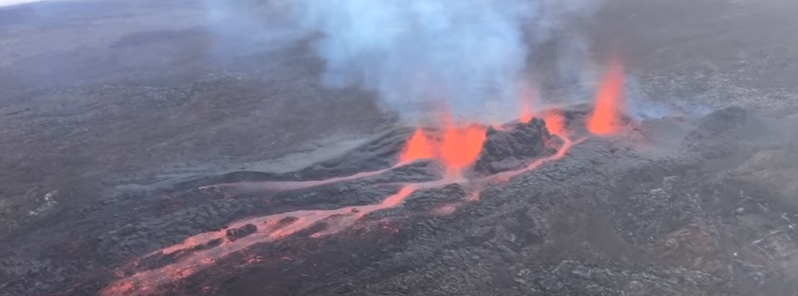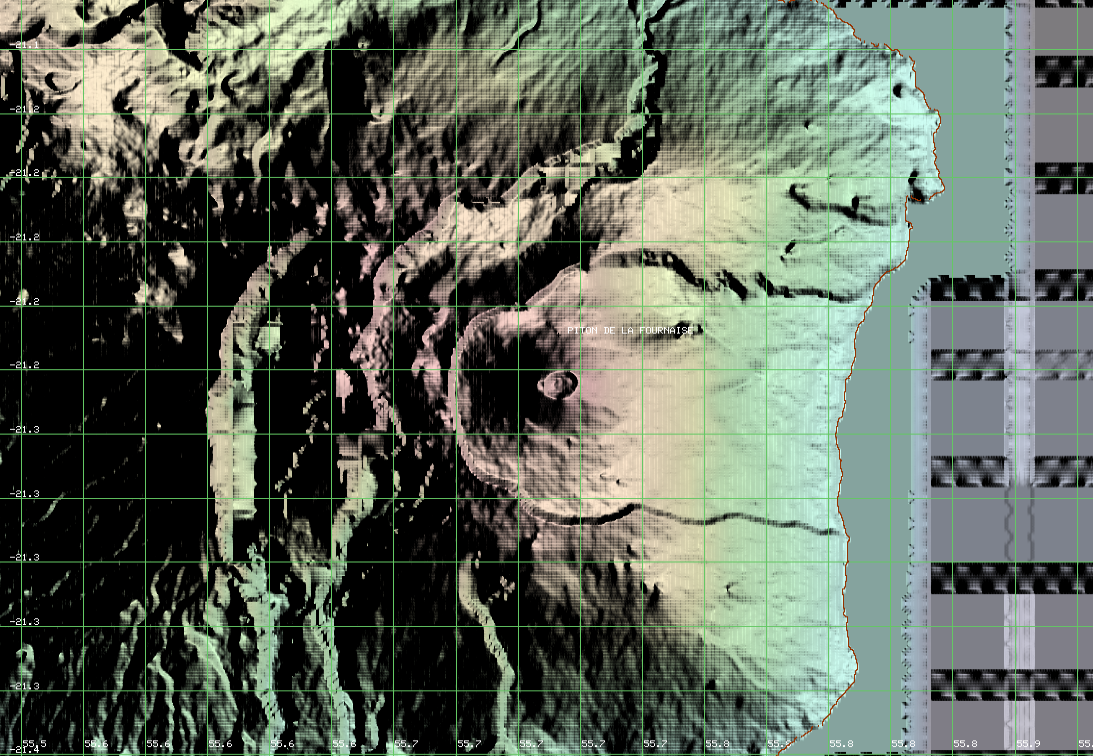Piton de la Fournaise volcano’s first eruption in 2016, La Réunion

Piton de la Fournaise volcano on the French La Réunion island erupted on the morning of May 26, 2016, according to IPGP. Following the event, the Prefecture placed a level 2 alert into effect, closing all public access to the Enclos. The eruption is the first one reported in 2016.
The new eruption started around 04:05 UTC, as the volcano observatory recorded a strong tremor signal, characteristical for the onset of volcano's fissure eruptions. It is thought to have taken place from a vent near Château Fort in the southeast of the Enclos. However, this hasn't been visually confirmed so far, due to bad weather conditions.

MODIS sensor heat sources over the last 7 days. Image credit: University of Hawai'i
Volcano Discovery reported that elevated seismic activity and beginning inflation of the volcanic edifice, the preceding signs of eruption, have been observed since May 16. An intense seismic swarm, accompanied by strong ground deformation was reported on May 25, at 19:40 UTC.

Video credit: IMAZPRESS Réunion
According to GVP, the Piton de la Fournaise volcano showed no signs of eruptive activity since October 2015. OVPDLF reported the effusive phase of the volcano's eruption that began on August 24, ceased on October 31 at 14:50 UTC. The gas emissions and seismicity continued to decrease through November and deformation data suggested no inflation.
Geological summary
The massive Piton de la Fournaise basaltic shield volcano on the French island of Réunion in the western Indian Ocean is one of the world's most active volcanoes. Much of its more than 530 000-year history overlapped with eruptions of the deeply dissected Piton des Neiges shield volcano to the NW. Three calderas formed at about 250 000, 65 000, and less than 5 000 years ago by progressive eastward slumping of the volcano. Numerous pyroclastic cones dot the floor of the calderas and their outer flanks.
Most historical eruptions have originated from the summit and flanks of Dolomieu, a 400-m-high (1 312 feet) lava shield that has grown within the youngest caldera, which is 8 km (26 247 feet) wide and breached to below sea level on the eastern side. More than 150 eruptions, most of which have produced fluid basaltic lava flows, have occurred since the 17th century. Only six eruptions, in 1708, 1774, 1776, 1800, 1977, and 1986, have originated from fissures on the outer flanks of the caldera. The Piton de la Fournaise Volcano Observatory, one of several operated by the Institut de Physique du Globe de Paris (IPGP), monitors this very active volcano. (GVP)
Featured image: Piton de la Fournaise eruption on May 26, 2016. Image credit: IMAZPRESS Réunion

Commenting rules and guidelines
We value the thoughts and opinions of our readers and welcome healthy discussions on our website. In order to maintain a respectful and positive community, we ask that all commenters follow these rules:
We reserve the right to remove any comments that violate these rules. By commenting on our website, you agree to abide by these guidelines. Thank you for helping to create a positive and welcoming environment for all.